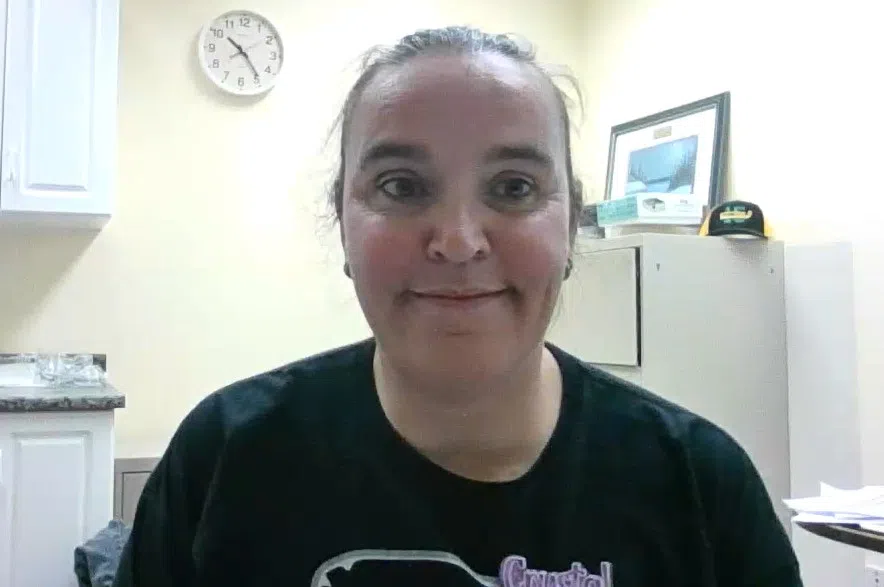One of the first thoughts Tisdale Hospital nurse supervisor Crystal Kuras had after hearing there had been a school bus crash late Monday afternoon, was, “Oh my God, here we go again.”
But after she and other staff who were working stopped for a moment and took some deep breaths, they quickly jumped into action — putting out a call for everyone available — including nurses, doctors and even cleaning staff to come in as quickly as possible.
“We immediately called a Code Orange,” she said. “We got everyone from all departments down to the nursing station and told them that there had been a bus accident south of town, and that we were going to need help.”
READ MORE:
- ‘It’s terrifying’: Health-care workers sound alarm at Legislative Building
- SARM says rural health care in ‘crisis,’ calls for return of nursing program
- ‘Dying for doctors’: Report cites concerns with health care in rural Saskatchewan
All together 59 staff, including 20 nurses, gathered at the hospital and got ready for the patients about to come through the doors.
In 2018, hospital staff were called into action to help after the Humboldt Broncos bus crash, that claimed the lives of 16 people, another 13 were also injured.
Some time after that response, staff gathered to formulate response plans in case something similar ever happened again. During the initial hour between the multiple casualty call and when patients began arriving, staff did everything they could to get ready.
“We set up areas for ‘green’ level patients — our walking wounded. We cleared our ER so we were ready for larger, more medical traumas, we cleared our outpatient department, we had our chemo room set up that we could use that for laceration stations — for suturing of patients, we moved supplies … so that we would be as best prepared as we could,” she said.
For Kuras, there were a lot of conflicting emotions; wondering whether her own children were OK, wondering whether she would know any of the injured coming to the hospital, or their parents.
“Our first few patients that came in, were brought in by their parents. Word had gone out quickly … so we had several of our patients coming in — brought in by family in private vehicles,” she said.
Eventually, ambulances began arriving as well, with the more seriously injured patients. Paramedics were able to notify the hospital ahead of time, so staff could prepare for their arrival.
While Kuras couldn’t say too much about those who were injured, she said they saw lots of “bumps and bruises,” some broken bones, and several of the teens had to be taken to Saskatoon with more serious injuries.
“Some of the kids had been bounced around pretty good, so everybody was pretty sore,” she said. “We were really focused on looking for pain management to start with.”
A number of X-rays were also done, to see whether injuries could be managed at that hospital, or whether patients would need additional treatment at a Saskatoon hospital.
Kuras said in a crisis, small communities come together to help one another.
“We are a small community. We know who our co-workers are. We know who their kids are. We know who’s on that bus south of town,” she explained.
She said they are trained to communicate with patients, patients and friends to make sure they’re aware of what’s happening and why.
“Once the emergency is dealt with, then it’s that moment when you kind of sit back and you have to take that deep breath and debrief with the team,” she added.
As for being called heros, Kuras simply admitted that she’s proud to work at the hospital, and proud of the team she works with.
“Everybody shows up. Everybody pitches in. And then everybody takes care of everybody afterwards,” she said.
According to the Kinistin Saulteaux Nation website, Grade 9 to 12 students are transported by bus to attend school in Tisdale.
A parent of two kids on the bus has confirmed it to be the “Kinistin High School bus” containing children aged 14 to 18. The parent estimated “more than 20 kids for sure are all banged up.”











